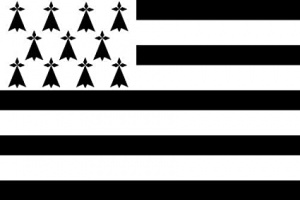Language/Breton/Grammar/Future-Tense
Hi Breton learners! 😊
In this lesson, we will learn about the future tense in Breton. We will look at the rules for forming the future tense, some examples, and practice with a quiz. Let's get started!
Rules
The future tense in Breton is formed by adding the suffix -o to the verb stem. The verb stem is the part of the verb that remains after removing the infinitive ending -añ. For example, the verb stem of klask (to search) is klask- and the future tense form is klasko.
The future tense can also be formed with the auxiliary verb bezañ (to be) plus the infinitive form of the verb. For example, the future tense of klask (to search) is bezañ o klask (will be searching).
Examples
| Breton | Pronunciation | English Translation |
|---|---|---|
| mont | mohnt | to go |
| monto | mohntoh | will go |
| bezañ o mont | behzahn oh mohnt | will be going |
| klask | klahsk | to search |
| klasko | klahskoh | will search |
| bezañ o klask | behzahn oh klahsk | will be searching |
Practice
To improve your Breton Grammar, you can also use the Polyglot Club website. Find native speakers and ask them any questions!
Quiz
Test your knowledge of the future tense in Breton with the following quiz:
1. How do you form the future tense in Breton? A. By adding the suffix -o to the verb stem B. By adding the suffix -añ to the verb stem C. By using the auxiliary verb bezañ plus the infinitive form of the verb
2. What is the future tense of the verb mont (to go)? A. Monto B. Bezañ o mont C. Montañ
3. What is the future tense of the verb klask (to search)? A. Klasko B. Bezañ o klask C. Klaskañ
Answers: 1. A & C, 2. A & B, 3. A & B.
➡ If you have any questions, please ask them in the comments section below.
➡ Feel free to edit this wiki page if you think it can be improved. 😎

